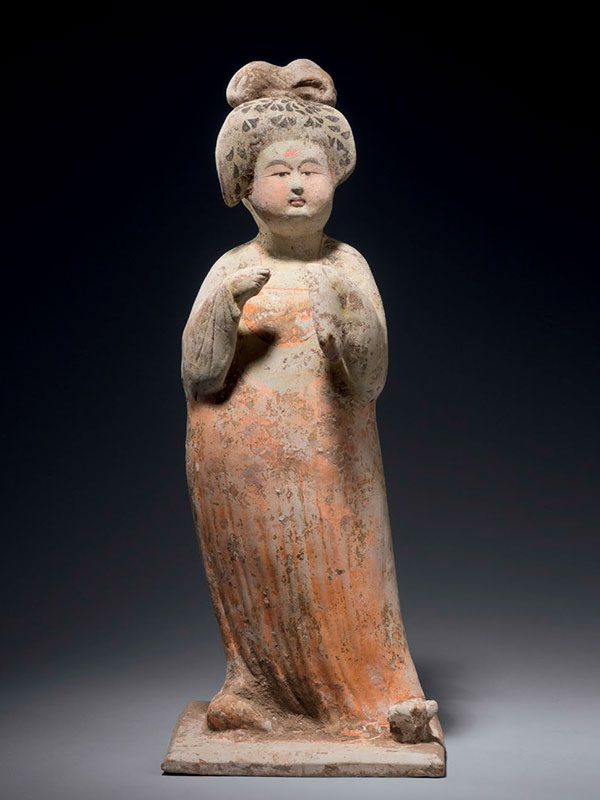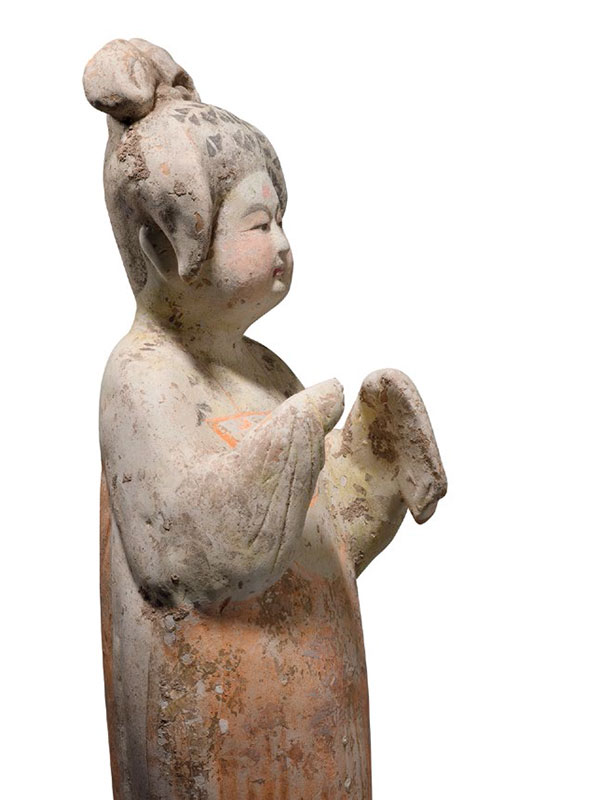Painted pottery figure of a court lady
A pottery figure of a court lady, dressed in a long-sleeved, high-waisted robe that falls in pleats to the floor and covers her right foot, whilst her left foot is exposed, showing her pointed shoe. She stands on a square base and holds both hands in front of her. Her left hand is hidden inside the sleeve, whilst the fingers of her right hand are revealed. Her hair is gathered into an elaborate arrangement and is tied up loosely into a double bun. The red pottery is completely covered in a thin layer of white slip and the delicate features of her face are painted with red, pink and black highlights, including a painted flower on her forehead. Elaborate traces of black and red pigment can be seen on the clothes.
This charming pottery figure of a court lady is highly unusual for the painted scheme that effectively remains almost in its entirety. Particularly the painted detail of the flowers in her hairdo, her facial features and some of the decoration on her robe are very rare features. These somewhat portly ladies, known as ‘fat ladies’, represent the ideal of beauty during the Tang dynasty and are often associated with Yang Guei-fei, one of China’s great beauties. Yang Guei-fei became the beloved and influential concubine of the Tang emperor Xuangzong (r. 712 – 756) in the early 740s. Only from then on the ideal of voluptuousness was considered beautiful and inspired the fashion for the plumper lady. A smaller Tang dynasty pottery lady, comparable in the clothes and hand gestures but less elaborate in the painted detail, is in the collection of the Palace Museum, Beijing.1
- Diao Shi Ru Sheng: Gugong Cang Sui Tang Taoyong (Carved and Clothed as if Alive: Sui and Tang Dynasty Tomb Figurines in the Collection of the Gugong Museum), Forbidden City press, Beijing, 2006, no. 41, p. 95


